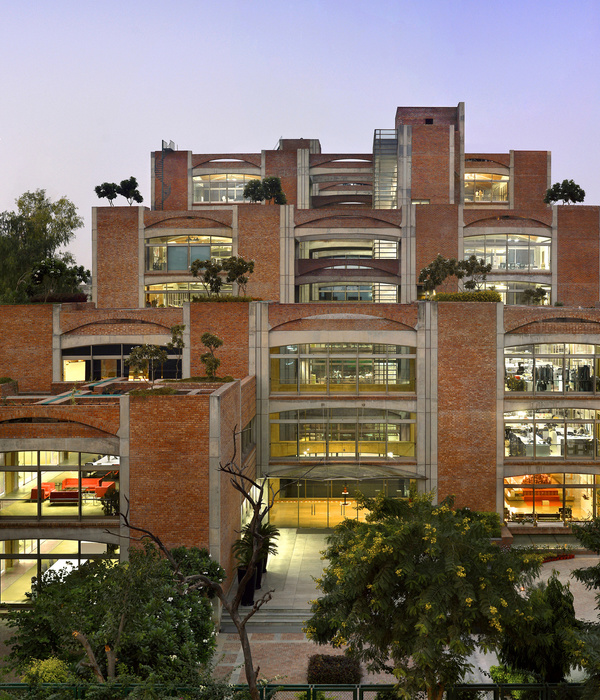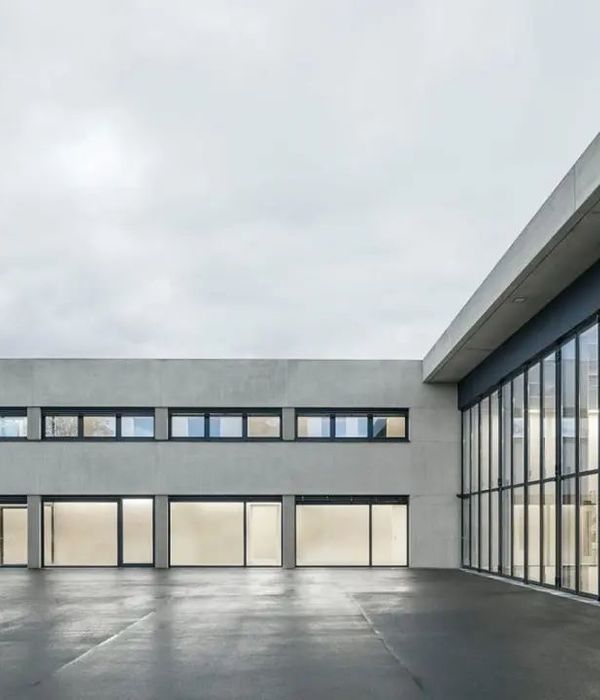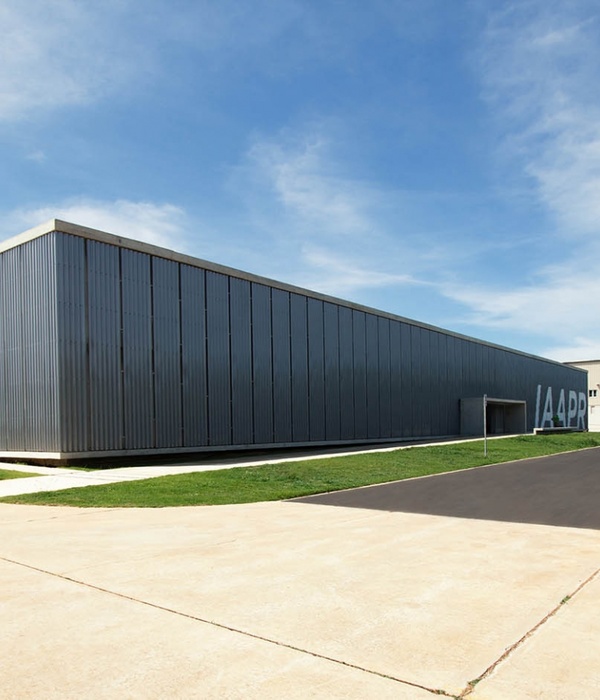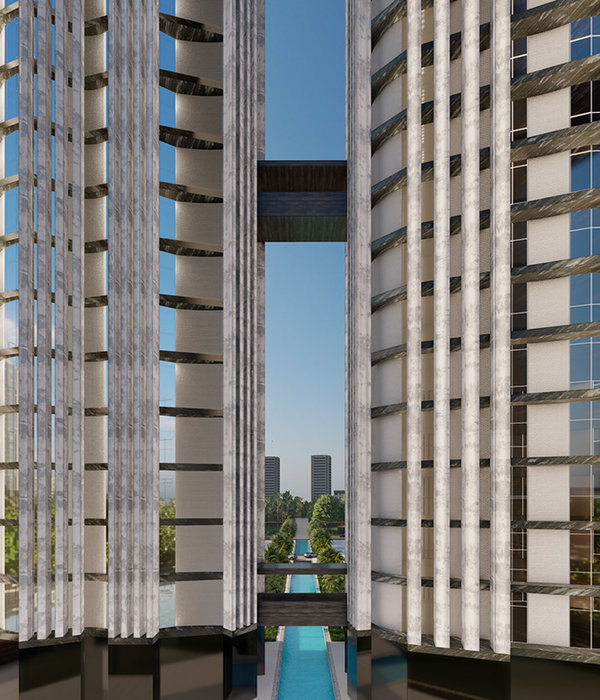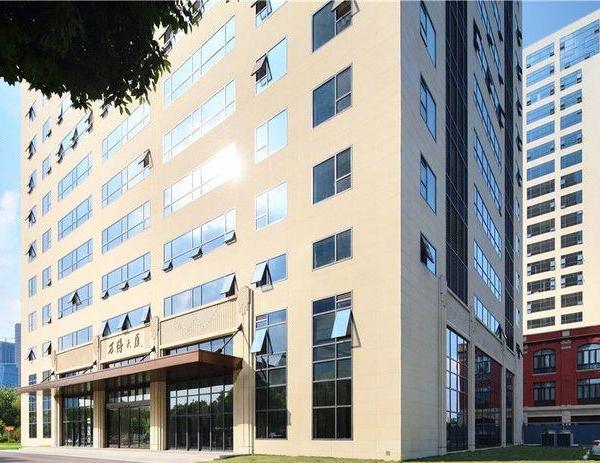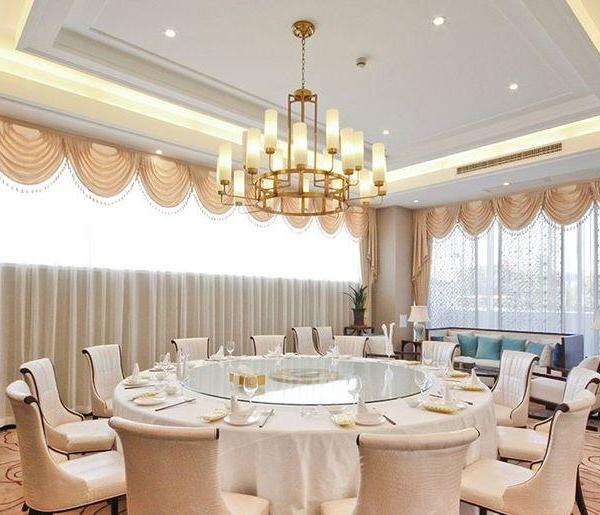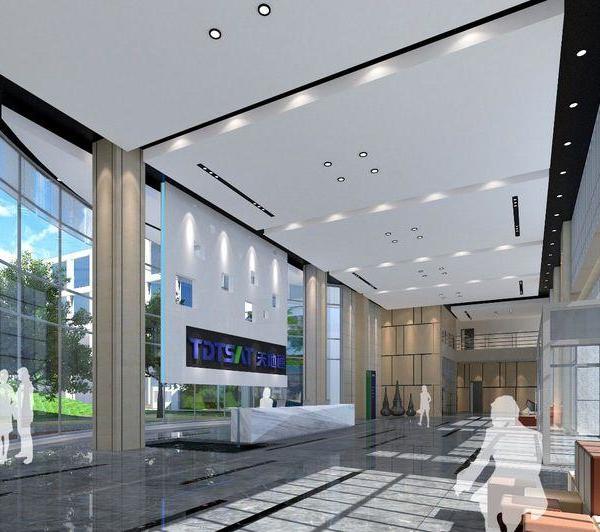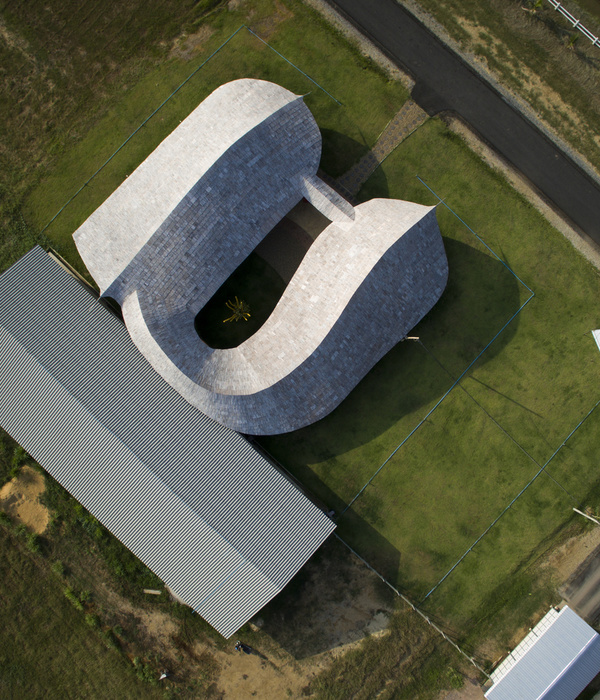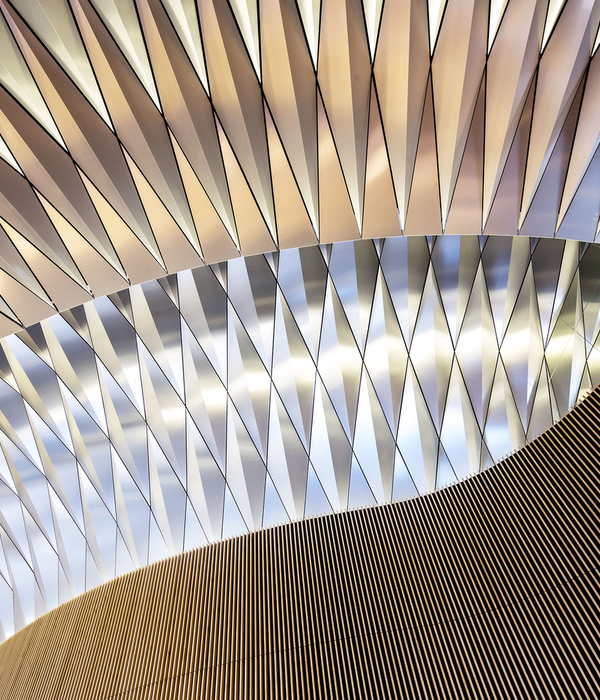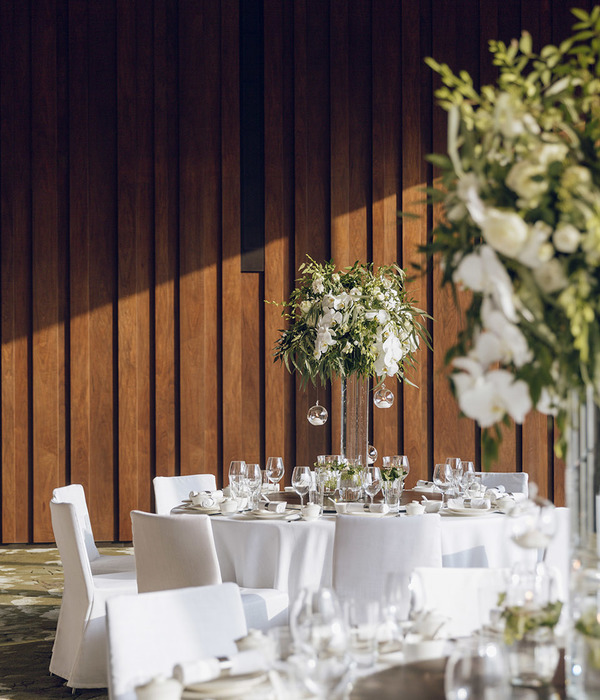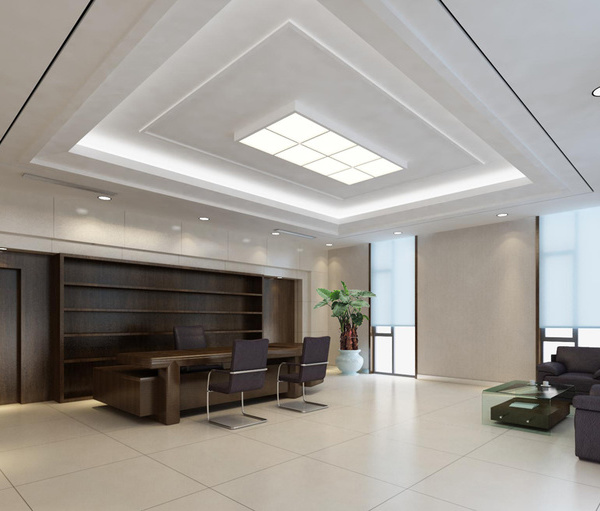在中国的新兴城市里,典型街区的大小约为 500×500 平方米以上。大型街区的问题主要存在于两方面:1、反城市——它减少了建筑/社区与城市之间的互动; 、高碳排放——公共交通不进入街区,城市空间又不宜于步行,使城市交通以小汽车为主导。
这个观察表明,致力于减少碳排放可能会成为提高城市宜居性的一种尝试,进而激发出一种温和的、潜在有效的设计策略:缩小街区的尺度。
The size of the typical block in new Chinese cities starts from approximately 500×500 square meters. The problem of the mega block is two-fold: 1. It is anti-urban – it weakens the interaction between buildings/communities and the city; 2. It is high-carbon – it makes an automobile-oriented city where public transportations stop outside the block and its scale does not support walking.
This observation suggests that the effort to reduce carbon emission could become an attempt to increase urbanity, which in turn inspires a modest, potentially effective, design strategy: Reduce the size of the block.
▼22 个微型街区组成的城市肌理,Urban fabric formed by 22 Mini Blocks ©田方方
当非常建筑有机会在上海的嘉定设计工业 4.0 示范基地——一个办公园区时,我们将面临挑战定义为:首要的问题:典型办公园区是郊区式的,我们如何能使其更城市化?城市空间的品质是什么?如何让人们更多地使用和享受城市空间?具体的,我们聚焦于一个问题:一个街区能有多小?
我们认识到:密度、比例和功能决定了一个街区的大小。由街道划分的街区是城市肌理的一部分。
When Atelier FCJZ was given the opportunity to design an office park outside of Shanghai in the satellite town of Jiading, the Industry 4.0 Demonstration Base, we defined the challenge as following: The bigger questions: An office park is typically suburban, can we turn it more urban? What are the qualities of urban space? How to make the people use and enjoy them more? Furthermore, we focused on one specific question:How small can a block be?
The size of a block is determined by density, scale, and program. A block is part of the urban fabric and defined by streets.
▼从肌理推进街区和街道,Zooming in on blocks and streets ©田方方
在我们提出的总体规划中,通过低层数(4 层),高密度(平均总体规划容积率 1.2 /街区容积率 2)平铺和混合功能,来提高城市的便捷性:这些建筑主要为高科技公司办公,一层为公共/商业设施,居住部分(由于中国的功能分区法规中要求工业园内只能有租赁公寓和酒店,而不能有公寓)在顶层。
▼全景鸟瞰,可看到限高为 4 层,Overall birdsight view showing 4-story height limit ©田方方
In the master plan we propose, urban accessibility is improved by a low-rise (4 stories) high density (average master plan FAR 1.2 / block FAR 2) carpet and mixed programs: Mainly offices for high-tech companies with public/ commercial facilities on the street level and some residential elements (rental apartments and hotels but not condominiums due to Chinese zoning regulation) on the top floor.
▼立面图,Elevations©FCJZ
▼剖面图,Sections©FCJZ
这里的主要城市空间是街道,街道宽 10 米,由两侧建筑 1 层高、3 米宽的骑楼(有顶步行道)界定。由于该项目位于长江以南地区,骑楼可以在漫长的雨季和夏季阳光灼热时为行人提供方便。
The primary urban space here is the street, which is 10 meters wide and spatially defined by the 3-meter wide covered walkways on the ground level of the buildings on both sides. As the project is situated in the southern Yangtze River region, covered walkways protect pedestrians from long rainy season and excessive sun in the summer.
▼典型十字路口,Typical intersection ©田方方
▼广场,The square ©田方方
▼步行道的十字路口,Intersection of pedestrian streets ©田方方
考虑到每家公司将拥有上限为 4000 平方米的建筑,零售店和餐饮希望位于街角位置,便于步行及街区之间的连接性,以及创造尽可能多的建筑街道界面,我们将街区的大小设置为 41.2 x 41.2 米。
After considering the facts that each company will own the building up to 4,000 square meters, retail outlets and eateries would desire corner locations, walk-ability and connectivity between blocks, and more building-street interface in general, we set the block size at 41.2 x 41.2 meters.
▼一个街角,A street corner ©田方方
网格:街道中心之间相距大约为 50 米 x 50 米。
街区/建筑模数:将41.2米分解为5个8米的柱距,两端再各有0.6米用于建筑外立面处理。41.2 x 41.2 米也符合每座建筑 4000 平方米的容积率,该面积允许若干小公司或一家大公司占用一个街区。这是一个单栋建筑的街区。虽然所有的建筑大小相似,但每个建筑的平面和立面设计都不同,这使得此开发项目能够满足不同企业的空间和身份的需求,并丰富了城市空间的体验。
▼总图,Site plan ©FCJZ
Grid: Approximately 50 meters x 50 meters from street center to street center.
Block/Building module: 41.2 meters break down to 5 x 8-meter column-to-column bays plus 0.6 meter on each end for potential architectural articulation of facade. 41.2 x 41.2 meter meets the floor area ratio of 4,000 square meters per block thus to allow a block to be occupied by a number of small firms or one large company. It is a single-building block. While all the buildings are of similar sizes, each one is designed differently in terms of floor plans and elevations, which allows the development to meet the varied space as well as identity needs of the businesses and enriches the experience in the urban spaces.
变化的立面设计,Changing facade design ©田方方
▼13 号街区楼立面细部,Facade detail of Block-Building 13 ©田方方
最早建成的 4 个街区:当我们开始第一组 4 个街区的建筑设计时,我们首先布置了一系列公共功能,比如会议中心和酒店,其面积需求构成一栋 8 层的建筑。为了忠实于我们的总体规划,我们设计了两组独立的建筑:一组是四栋地面上 4 层的街区建筑;另一组是 4 层的环形建筑,“漂浮”在街区建筑之上。
这说明,微型街区有可能实现更高的密度。
First 4 blocks: When we started the architectural design of the first four blocks, we were asked to facilitate a number of public functions, such as a convention center and a hotel, which result in a 8-story buildings. To be true to our master plan, we designed two separate pieces of architecture: One is four 4-story block-buildings on the ground; another is 4-story continuous loop-building that “floats” on the top of the blocks.
This is an indication that the mini block may work for a higher density.
▼2013最早建成的 4 个街区,First 4 blocks were completed in 2013
非常建筑设计了 22 栋街区建筑。41.2 街区与典型的 500 米以上街区截然相反(超大街区可达到 800×800 米),它是一个微型街区。
There are 22 block-buildings designed by FCJZ. The 41.2 block is the antithesis of the typical 500-meter and up mega block (Super mega block would go up to 800×800 meters). It’s the Mini Block.
▼15 号街区楼,Block-Building 15 ©田方方
▼8 号街区楼,Block-Building 8 ©田方方
▼9 号街区楼,Block-Building 9 ©田方方
▼12 号街区楼,Block-Building 12 ©田方方
▼14 号街区楼,Block-Building 14 ©田方方
▼11 号街区楼立面细部,Facade detail of Block-Building 11 ©田方方
▼20 号街区楼立面细部,Facade detail of Block-Building 20 ©田方方
▼7 号街区楼天窗,Skylights of Block-Building 7 ©田方方
总计划的概念通过以下几项措施得到加强:综合交通:在规划一系列步行街的同时,我们在一些次要的交通流线中引入了“共享街道”的概念,将街道生活和车辆交通结合起来,同时实现了安全性和便捷性。该设计最终没有能够完全实现。
The master plan concept is reinforced by several other measures:Integrated circulation:While planning a series of pedestrian streets, we introduced to some of secondary circulatory routes the concept of “Shared Street” to mix street life and vehicular traffic through careful design to achieve safety and accessibility at the same time. Unfortunately, this idea was not fully realized.
景观步行道,Pedestrian street with landscape ©田方方
▼弯曲车行道,Bending vehicular street ©田方方
▼车行道的一个弯道,A bend on a vehicular street ©田方方
骑楼系统:在街道部分中已经提到,街道两侧的所有建筑都必须有 3 米宽的柱廊或悬挑,此要求在设计导则中有明确规定。
Covered walkway system: Already mentioned with the street, a 3-meter wide colonnade or cantilever is required on the street level for all the buildings, as specified in the design guidelines.
步行道两侧的骑楼,Pedestrain street with covered walkway on both sides ©田方方
沿着步行道的骑楼,Under covered walkway along a pedestrian street©田方方
沿着车行道的骑楼,Under covered walkway along a vehicular street ©田方方
建筑围护结构:二楼及以上的楼层不允许退红线,这也是设计导则中规定的。
Building envelope: Setback is not permitted from the second floor and up, also as specified in the design guidelines.
▼21 号街区楼局部开放的首层,Block-Building 21 with partially open ground floor ©田方方
▼13 号街区楼内庭院,Courtyard of Block-Building 13 ©田方方
▼5 号街区楼内庭院,Courtyard in Block-Building 5 ©田方方
▼5 号街区楼走廊,Passageway of Block-Building 5 ©田方方
▼11 号街区楼内庭院,Courtyard of Block-Building 11 ©田方方
▼7 号街区楼室内,Interior of Block-Building 7 ©田方方
▼9 号街区楼室内,Interior of Block-Building 9 ©田方方
▼14 号街区楼室内,Interior of Block-Building14 ©田方方
在中国,通常的控制性规划没有定义建筑物的具体位置和形状,因此无法控制城市空间的质量。我们制定了介于总体规划和建筑设计之间的一套设计导则,作为规划实施的重要工具。因此,其他参与该项目的设计院/事务所也都必须遵循了这一设计导则。
项目完成后,我们相信:小就是美。
The conventional master plan for control in China does not define the specific locations and configurations of buildings and as a result it does not control the quality of urban spaces. We developed design guidelines between the stages of master plan design and architectural design as a critical tool for implementation. Therefore, other design institutes/offices participating in the project have all followed the design guidelines.
Upon the completion of the project, we believe:Small is beautiful.
傍晚街灯亮起的街道,Evening view with street lights ©田方方
但仍有一个问题悬而未决:城市性到底是什么?
Yet one question remains unanswered: What is urbanity?
▼平面图,Plan©FCJZ
项目信息/Project Info 客户Client: 嘉定工业区/Shanghai Jiading Industrial Zone 地点Location: 嘉定工业园区,嘉定区,上海/ Jiading Industrial Park, Jiading District, Shanghai, China 主持建筑师Principal Architects: 张永和/Yung Ho Chang 项目团队Project Team: Dan Chen、刘靖、刘向晖、蔡峰、董书音、林方杰、刘扬、郭庆民、吴瑕、黄舒怡、沈愉恒、赵春雷等/ Dan Chen, Liu Jing, Liu Xianghui, Cai Feng, Dong Shuyin, Lin Fangjie, Liu Yang, Guo Qingmin, Wu Xia, Huang Shuyi, Shen Yuheng, Zhao Chunlei Etc.设计合作/ Collaboration: 筑:上海建筑设计研究院有限公司/Architecture: Arcplus Institute of Shanghai Architectural Design & Research (Co., Ltd) 景观:同济大学建筑设计研究院/ landscape: Tongji Architectural Design (Group) Co., Ltd 建筑面积Building Area:70085.7㎡结构材料/Structure and Material: 框架混凝土拱结构,钢桁架结构/ Reinforced concrete arch, Steel truss 设计周期Design Period: 2012 ~ 2014 竣工时间Completion Time: 2020
{{item.text_origin}}

